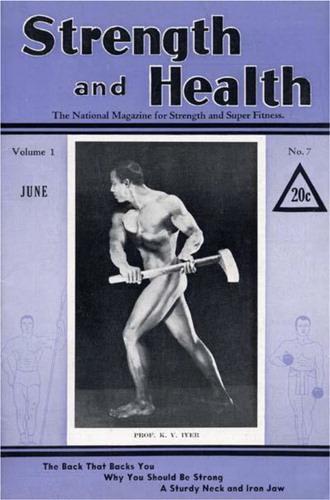Kolar Venkatesh, or K.V., Iyer, was one of India’s most famous and popular physical culturists from the early 1930s. Well regarded in both eastern and western circles, Iyer counted on a vast number of European and American admirers. From magazines and Iyer’s own books, we know that Iyer was in regular correspondence with individuals such as Mark Berry, Bernarr MacFadden, Charles Atlas, John Grimek and Eugen Sandow among others. Such was Iyer’s reputation that Mark Berry often counted him as one of the finest examples of physical development around. For researchers studying in Europe or North America, access to Iyer’s written materials is notoriously difficult to come across. This is especially the case with Iyer’s correspondence courses published in the 1930s and 1940s in India.
Those familiar with the history of Earle Liederman or Charles Atlas will already be familiar with the importance of mail order courses in the twentieth century. For subscribers, these courses were sent out on a regular or semi-regular basis and served as a reference guide for training, nutrition, health, and, even life advice. For entrepreneurs like Atlas, the mail order course helped propel him into a new level of stardom and influence. For Iyer, it allowed him to further his reach through India. Iyer’s correspondence courses, which have thankfully been digitized by the Stark Center, differ from those found in America on several fronts. While the training and nutrition advice is broadly similar, Iyer’s correspondence courses made a deliberate effort to include Hindu exercises, dietary advice and spiritual practices into a trainee’s regimen. In this way, the courses offer a remarkable insight into how global health practices, like physical culture, came to be adopted and adapted to local sensitivities.
For more information on Iyer’s importance see Ramachandran, A., & Heffernan, C. (2019). A Distinctly Indian Body? K.V. Iyer and Physical Culture in 1930s India. The International Journal of the History of Sport, 1–5.




Leave a Reply